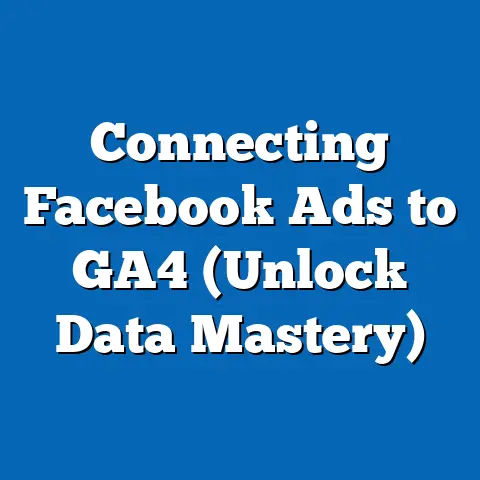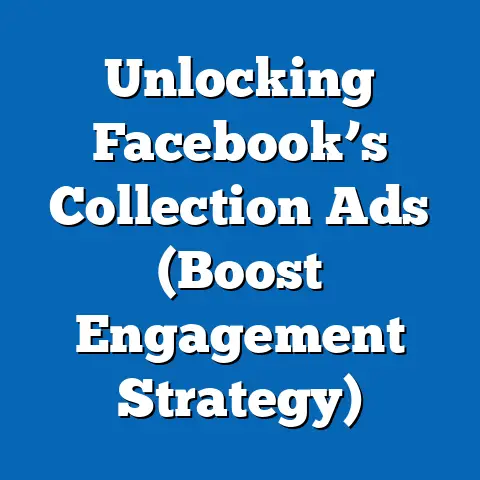Master Political fb ad Authorization (Insider Strategies)
The digital landscape has irrevocably transformed political campaigning. Gone are the days of relying solely on traditional media. Today, a powerful online presence, particularly on social media platforms like Facebook, is crucial for reaching voters, shaping narratives, and ultimately, winning elections. Political advertising on Facebook has exploded, becoming a vital tool for candidates and organizations to connect with constituents, mobilize support, and disseminate their message. However, with this power comes responsibility. Facebook, recognizing its role in shaping public discourse, has implemented stringent policies around political advertising, requiring ad authorization to ensure transparency and prevent misuse.
Navigating this authorization process can feel daunting. I remember when I first started helping political campaigns with their Facebook strategies, the authorization process felt like a maze. The rules seemed complex, the documentation requirements confusing, and the potential for delays frustrating. But, after years of experience, I’ve learned the ins and outs, the shortcuts, and the best practices to make this process as smooth as possible.
This article is your insider’s guide to mastering political Facebook ad authorization. I’m going to walk you through the process, step by step, focusing on making the installation easy and efficient. My goal is to equip you with the knowledge and strategies to navigate the authorization process smoothly, so you can focus on what truly matters: connecting with voters and running a successful campaign. This guide isn’t just about ticking boxes; it’s about understanding the “why” behind the rules, leveraging best practices, and ultimately, using Facebook ads effectively to amplify your message and achieve your political goals.
Understanding Facebook Ad Authorization
Facebook ad authorization, specifically for political ads, is a mandatory process designed to ensure transparency and accountability in political advertising on the platform. It’s Facebook’s way of verifying the identity and legitimacy of individuals or organizations running ads with political content. This process helps prevent foreign interference, minimizes the spread of misinformation, and promotes a more transparent and trustworthy political advertising ecosystem.
Think of it as a digital passport for your political ads. You wouldn’t cross a border without proper identification, and you shouldn’t run political ads on Facebook without authorization.
Why is Authorization Important?
Authorization is crucial for several reasons:
- Transparency: It allows voters to see who is paying for political ads, increasing transparency in the political process. Facebook displays a “Paid for by” disclaimer on authorized political ads, clearly identifying the sponsor.
- Accountability: It holds advertisers accountable for the content they promote, discouraging the spread of misleading or false information.
- Trust: It builds trust in the political advertising ecosystem by ensuring that ads are coming from legitimate sources.
- Compliance: It ensures compliance with Facebook’s policies and regulations, as well as applicable election laws.
What Types of Political Ads Require Authorization?
Facebook defines political ads broadly, encompassing any ad that:
- Is about social issues, elections, or political figures.
- Advocates for or against a candidate, political party, or ballot measure.
- Attempts to influence the outcome of an election or legislative process.
In essence, if your ad touches on anything remotely political, it likely requires authorization. It’s always better to err on the side of caution.
Consequences of Non-Compliance
Running political ads without authorization can lead to serious consequences:
- Ad Disapproval: Your ads will be rejected by Facebook’s ad review system.
- Account Suspension: Your ad account may be suspended or permanently banned.
- Legal Penalties: You could face legal penalties for violating election laws related to advertising disclosure requirements.
Key Takeaway: Facebook ad authorization is not optional. It’s a fundamental requirement for running political ads on the platform. Understanding the importance of authorization and the consequences of non-compliance is the first step towards a successful and ethical political advertising campaign.
The Installation Process for Facebook Ad Authorization
Now, let’s dive into the practical steps of getting authorized. I know it can seem intimidating, but I’m going to break it down into manageable pieces.
Step 1: Create a Facebook Business Manager Account
If you don’t already have one, the first step is to create a Facebook Business Manager account. This is the central hub for managing your Facebook Pages, ad accounts, and team members.
- Go to business.facebook.com and click “Create Account.”
- Follow the prompts to enter your business name, contact information, and create a password.
- You’ll need to link your existing Facebook Page (or create a new one) to your Business Manager account.
- Add any team members who will be helping you manage your ads.
Why Business Manager? Business Manager provides a centralized and secure way to manage your Facebook assets, especially crucial for political campaigns with multiple team members and ad accounts.
Step 2: Initiate the Authorization Process
Once you have your Business Manager account set up, you can begin the authorization process.
- Go to the Ad Account Settings: Within Business Manager, navigate to the ad account you plan to use for political ads.
- Find the “Political Ad Authorization” Section: Look for a section related to political ad authorization or election integrity. The exact wording and location may vary slightly depending on Facebook’s updates.
- Start the Authorization Process: Click on the button to initiate the authorization process.
Step 3: Identity Verification
Facebook requires you to verify your identity to ensure you are a real person and that you reside in the country you are targeting.
- Provide your personal information: This includes your name, address, date of birth, and phone number.
- Upload a government-issued ID: You’ll need to upload a copy of your driver’s license, passport, or other government-issued ID. Make sure the ID is clear and legible.
- Verify your address: Facebook may send you a postcard with a verification code to your address. You’ll need to enter this code on Facebook to confirm your address.
Tip: Use a high-quality scan or photo of your ID to avoid rejection. Ensure your name and address on Facebook match the information on your ID.
Step 4: Ad Account Setup and Disclaimer
You’ll need to associate your ad account with your authorized identity and create a “Paid for by” disclaimer.
- Associate your ad account: Link the ad account you’ll be using for political ads to your authorized identity.
- Create a “Paid for by” disclaimer: This disclaimer will appear on all your political ads, clearly identifying the organization or individual paying for the ad. The disclaimer must be accurate and truthful. You’ll need to provide the name and physical address of the entity paying for the ads.
Example Disclaimer: “Paid for by [Campaign Name], [Address]”
Step 5: Review and Submit
Once you’ve completed all the steps, review your information carefully and submit your application. Facebook will review your application and notify you of the outcome. This process can take a few days, so be patient.
Step 6: Accessing the Ad Library
The Ad Library is a publicly accessible database of all ads running on Facebook. It’s a valuable tool for tracking political ads and understanding the political advertising landscape.
- Go to facebook.com/ads/library.
- You can search for ads by keyword, advertiser, or issue.
- You can see the ad creative, targeting information, and spending estimates.
Why is the Ad Library important? It allows you to see what your competitors are doing, identify trends in political advertising, and ensure your ads are compliant with Facebook’s policies.
Key Takeaway: The Facebook ad authorization process involves several steps, but it’s manageable if you follow the instructions carefully and provide all the necessary information. Remember to be patient and persistent, and don’t hesitate to contact Facebook support if you have any questions.
Insider Strategies for Successful Authorization
Now that you know the basic steps, let’s talk about some insider strategies that can help you navigate the authorization process more smoothly and efficiently.
1. Prepare Your Documentation in Advance:
This is the most crucial tip. Don’t wait until the last minute to gather your documents. Have all your information ready before you even start the process. This includes:
- A clear scan or photo of your government-issued ID.
- The exact name and address you want to use for your “Paid for by” disclaimer.
- Your business registration documents (if applicable).
2. Use a Dedicated Email Address:
Create a dedicated email address for your political campaign and use it for all your Facebook communications. This will help you keep track of important updates and notifications.
3. Maintain Clear Communication with Facebook Support:
If you encounter any issues during the authorization process, don’t hesitate to contact Facebook support. They can provide guidance and help you resolve any problems.
- Use the Facebook Help Center: The Help Center is a valuable resource for finding answers to common questions.
- Contact Facebook Ads Support: You can contact Facebook Ads Support through the Business Manager. Be prepared to provide your Business Manager ID and ad account ID.
- Be polite and professional: When communicating with Facebook support, be polite and professional. This will increase the chances of getting a helpful response.
4. Understand Facebook’s Policies:
Familiarize yourself with Facebook’s advertising policies, especially those related to political advertising. This will help you avoid running afoul of the rules and getting your ads disapproved.
- Review the Community Standards: The Community Standards outline what is and is not allowed on Facebook.
- Read the Advertising Policies: The Advertising Policies provide specific guidelines for advertising on Facebook.
- Pay attention to updates: Facebook’s policies are constantly evolving, so stay up-to-date on the latest changes.
5. Start Early:
Don’t wait until the week before the election to start the authorization process. Start early to give yourself plenty of time to complete the process and resolve any issues that may arise.
Case Study: The Power of Preparation
I worked with a local mayoral candidate who was running a tight race. They knew Facebook ads were critical, but they were nervous about the authorization process. We started weeks in advance, gathering all the necessary documents and familiarizing ourselves with Facebook’s policies. When we finally started the authorization process, it was a breeze. We were approved within a few days, and we were able to start running ads well in advance of the election. This allowed us to reach a wider audience and ultimately help the candidate win the election.
Key Takeaway: Successful Facebook ad authorization is all about preparation, communication, and understanding the rules. By following these insider strategies, you can navigate the process smoothly and efficiently, allowing you to focus on running a successful political campaign.
Overcoming Common Challenges
Even with the best preparation, you may encounter challenges during the Facebook ad authorization process. Here are some common pitfalls and how to overcome them:
1. Rejected ID:
- Problem: Your government-issued ID is rejected.
- Solution: Make sure the ID is clear, legible, and not expired. Ensure your name and address on Facebook match the information on your ID. If you’ve recently moved, update your address on your ID before submitting it. Try a different type of ID if possible (e.g., passport instead of driver’s license).
2. “Paid for by” Disclaimer Issues:
- Problem: Your “Paid for by” disclaimer is rejected.
- Solution: Ensure the name and address in your disclaimer are accurate and truthful. The address must be a physical address, not a P.O. Box. If you’re using a business name, make sure it matches your business registration documents.
3. Verification Code Not Received:
- Problem: You don’t receive the verification code postcard from Facebook.
- Solution: Double-check that you entered your address correctly. Contact Facebook support to request a new postcard. Be patient, as it can take several weeks for the postcard to arrive.
4. Account Suspension:
- Problem: Your ad account is suspended during the authorization process.
- Solution: Contact Facebook support immediately to find out why your account was suspended and what you need to do to reinstate it. Be prepared to provide additional information or documentation.
5. Delays in Approval:
- Problem: Your application is taking longer than expected to be approved.
- Solution: Be patient. Facebook’s review process can take time. Contact Facebook support to check on the status of your application. Be polite and professional.
Anecdote: The Importance of Persistence
I once worked with a campaign manager who was incredibly frustrated with the authorization process. Their application was repeatedly rejected, and they were on the verge of giving up. I encouraged them to be persistent and to work with Facebook support to resolve the issues. After several weeks of back-and-forth, we finally got their application approved. The key was not giving up and continuing to work towards a solution.
Key Takeaway: Don’t be discouraged by challenges during the Facebook ad authorization process. Be persistent, communicate with Facebook support, and don’t be afraid to ask for help. With a little patience and determination, you can overcome any obstacle.
Leveraging Authorized Ads for Maximum Impact
Congratulations! You’ve successfully navigated the authorization process. Now, it’s time to leverage your authorized ads for maximum impact. Here’s how:
1. Define Your Target Audience:
Before you start creating ads, take the time to define your target audience. Who are you trying to reach? What are their interests, demographics, and political views? Facebook’s targeting options allow you to reach very specific audiences.
- Demographics: Target by age, gender, location, education, and other demographic factors.
- Interests: Target by interests, hobbies, and activities.
- Behaviors: Target by online behaviors, such as purchase history and website visits.
- Custom Audiences: Upload your own customer lists or create lookalike audiences based on your existing customers.
2. Craft Compelling Ad Content:
Your ad content is what will grab people’s attention and persuade them to take action.
- Use high-quality visuals: Use eye-catching images or videos that are relevant to your message.
- Write clear and concise copy: Get straight to the point and use language that resonates with your target audience.
- Include a strong call to action: Tell people what you want them to do (e.g., “Vote for [Candidate Name],” “Donate Now,” “Learn More”).
- A/B test your ads: Experiment with different headlines, images, and calls to action to see what works best.
3. Utilize Facebook’s Ad Tools:
Facebook offers a variety of ad tools that can help you optimize your campaigns.
- Facebook Pixel: Install the Facebook Pixel on your website to track conversions and build custom audiences.
- Campaign Budget Optimization (CBO): Let Facebook automatically allocate your budget across your ad sets to maximize your results.
- Automated Rules: Set up automated rules to automatically pause or adjust your ads based on performance.
4. Analyze Ad Performance:
Regularly analyze your ad performance to see what’s working and what’s not.
- Track key metrics: Track metrics such as reach, impressions, clicks, conversions, and cost per conversion.
- Use Facebook Analytics: Use Facebook Analytics to get insights into your audience and their behavior.
- Make adjustments: Based on your analysis, make adjustments to your targeting, ad content, or budget.
5. Comply with Facebook’s Policies:
Always comply with Facebook’s advertising policies. Violating the policies can lead to ad disapproval or account suspension.
Key Takeaway: Getting authorized to run political ads on Facebook is just the first step. To maximize your impact, you need to define your target audience, craft compelling ad content, utilize Facebook’s ad tools, analyze your ad performance, and comply with Facebook’s policies.
Conclusion
Mastering Facebook ad authorization is no longer a luxury; it’s a necessity for any political campaign seeking to thrive in today’s digital landscape. By understanding the importance of authorization, navigating the installation process effectively, leveraging insider strategies, overcoming common challenges, and crafting compelling ad content, you can harness the power of Facebook ads to connect with voters, amplify your message, and achieve your political goals.
I’ve seen firsthand the transformative impact of well-executed Facebook ad campaigns on political races, from local elections to national campaigns. The key is not just about running ads; it’s about running them strategically, ethically, and in compliance with Facebook’s policies.
Remember, the authorization process may seem daunting at first, but with the right knowledge and preparation, it’s entirely manageable. Don’t be afraid to ask for help, stay persistent, and always prioritize transparency and accountability in your political advertising.
So, take the knowledge you’ve gained from this guide, put it into action, and empower your campaign with the reach and influence of Facebook ads. The digital battlefield awaits, and with the right strategies, you can emerge victorious.






